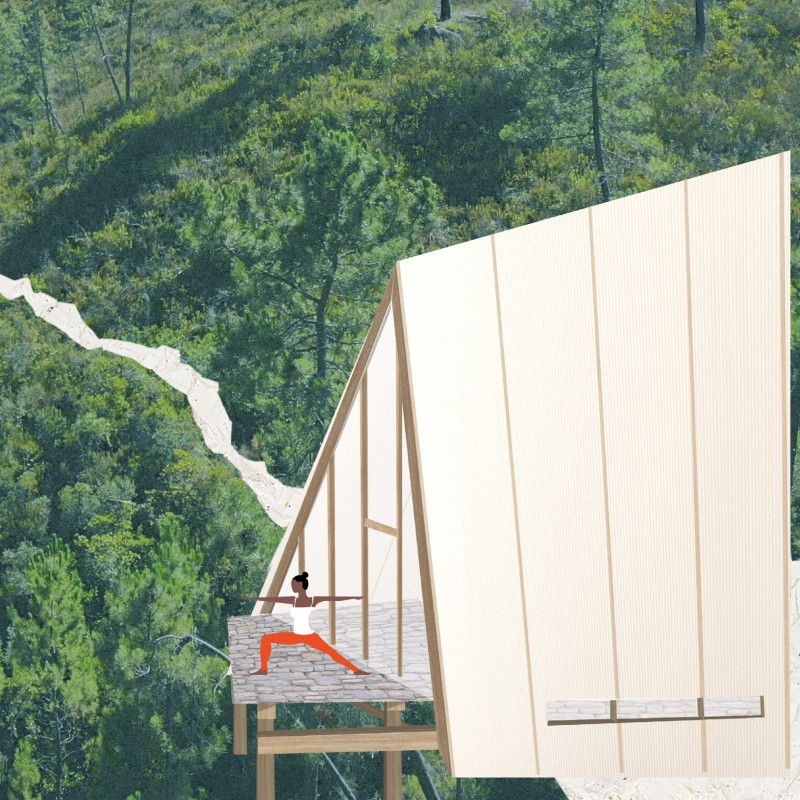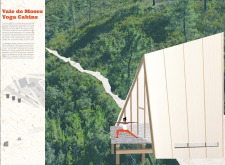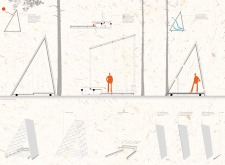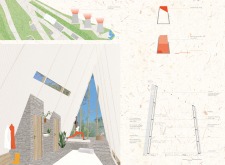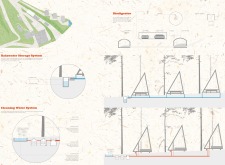5 key facts about this project
Functionally, these cabins serve as accommodation and practice spaces for individuals seeking a restorative experience. Each cabin is designed to facilitate mindfulness and relaxation, offering an immersive environment where users can engage in yoga, meditation, and reflection. The layout encourages a seamless flow between indoor and outdoor spaces, reinforcing the connection to the surrounding forest.
One of the most notable aspects of the design is the triangular form of the cabins. This shape not only provides structural integrity but also integrates well with the natural contours of the site. The design's intentional orientation toward scenic vistas enhances the therapeutic qualities of the environment, with large windows designed to maximize natural light and views. This connection with the outdoors is significant, as studies have shown that natural light and surroundings contribute positively to mental health and well-being.
Material selection is another critical element of the project. The prominent use of locally sourced timber links the architecture to its location, reflecting a commitment to sustainability. The decision to incorporate recycled materials, such as recycled PET for roofing and wall panels, exemplifies a modern approach to environmental responsibility in architecture. In addition, the use of natural stone for flooring enhances the organic feel of the interiors, creating a warm and inviting atmosphere.
Each cabin includes features tailored for comfort and functionality. The interiors promote simplicity, with open spaces designed to accommodate yoga practice, while also providing practical amenities. Emphasis is placed on creating an environment that supports relaxation, with the layout designed for easy circulation and accessibility. Key features include areas designated for meditation and relaxation, ensuring each aspect of the design is aligned with the wellness-focused mission of the project.
A unique approach within the Vale de Moses Yoga Cabins is the integration of sustainable technologies. The project's focus on rainwater collection and the use of a biodigester acts as a model for responsible design. These systems not only minimize environmental impact but also contribute to a self-sustained ecosystem, further enriching the user experience by fostering a sense of harmony with nature.
The architectural design reflects a blend of innovation and tradition, with an emphasis on ecological balance. The project serves as an example of how architecture can support holistic practices and connect individuals to their surroundings meaningfully. The careful attention to site-specific design solutions underscores the importance of context in architectural projects.
For those interested in exploring the architectural intricacies of this project, a detailed presentation that includes architectural plans, sections, and designs can offer deeper insights into the innovative ideas that make this retreat a compelling example of contemporary architecture. The Vale de Moses Yoga Cabins exemplify how thoughtful design can create spaces that nourish the mind and spirit while fostering a profound connection with the environment. Readers are encouraged to review the project further to understand the full depth of its architectural philosophy and visual language.


